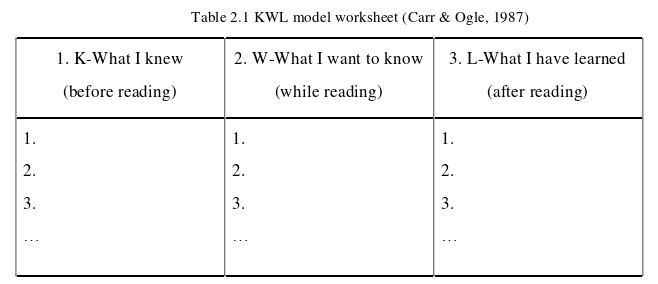联系方式
more本类最新英语论文
- 2024-04-26产出导向法在高中英语写作教..
- 2024-04-17基于语境理论的高中英语词汇..
- 2024-04-08问题导向的英语阅读教学对高..
- 2024-04-05对分课堂对高中生英语阅读学..
- 2024-02-11动态评价理论视角下多元反馈..
- 2024-01-20kml阅读模式在高中英语阅读..
- 2024-01-19基于主题意义的英语阅读教学..
- 2024-01-18聚集与非聚集书面纠正性反馈..
- 2024-01-09识解视域下概念型教学法对高..
- 2023-12-30窄式阅读训练对高中生读后续..
more热门文章
- 2009-04-17试从交际法的角度看高中英语..
- 2010-02-03高中快乐教学方法研究on ha..
- 2010-02-03中学英语的学习方法on the ..
- 2010-02-09on cultivating students’..
- 2009-04-17背诵法与交际的结合在口语中..
- 2009-04-17谈英语词汇教学
- 2010-02-03探讨高中听说教学中的问题
- 2010-03-12discussion about study-di..
- 2012-04-20高中英语教学论文——英语写..
- 2009-11-09浅谈高考英语单选题的误区
more留学论文写作指导
- 2024-05-07《湖泊的一生》(节选)英汉..
- 2024-03-31卡森•麦卡勒斯小说中..
- 2024-03-28美国黑人女性心理创伤思考—..
- 2024-03-27乔治·艾略特《织工马南》中..
- 2024-03-21超越凝视:论《看不见的人》..
- 2024-03-19《哈克贝利•费恩历险..
- 2024-03-13心灵救赎之旅——从凯利的三..
- 2024-02-22文学地理学视角下的《印度之..
- 2023-05-03英、汉名词短语之形容词修饰..
- 2023-02-07目的论视域下5g—the futur..
KML阅读模式在高中英语阅读教学中的推广思考 [2]
论文作者:留学生论文论文属性:硕士毕业论文 thesis登出时间:2024-01-20编辑:vicky点击率:557
论文字数:52212论文编号:org202401172100412208语种:英语 English地区:中国价格:$ 66
关键词:高中英语教学论文范文硕士论文范文
摘要:本文是一篇高中英语教学论文,本研究试图将KWL阅读模式应用于高中英语阅读课堂,从而探讨其对学生英语阅读能力和阅读兴趣的影响。

Chapter Two Literature Review
2.1 Definitions of related concepts
In order to better understand the thesis, this section presents an overview of related concepts including the KWL reading model, classical reading models and English reading ability, which aims to provide a basis for further research.
2.1.1 KWL reading model
In this section, the author introduces KWL reading model from 4 aspects, which includes the proposal of the KWL reading model, the theoretical basis of the KWL reading model, as well as the steps and principles of implementing the KWL reading model.
2.1.1.1 The proposal of the KWL reading model
The KWL reading model was firstly proposed by Donna Ogle in 1986. It was designed for teachers to solve problems together with a group of students. To be specific, it is a three-step teaching instructional model for teachers to help students read in a systematic manner. Initially, the KWL model was mostly applied in expository text (Ogle, 1986). But now it is widely used in social studies, math, science, literature and other fields. The three letters in the name, KWL, are acronyms for Know, Want to know, and Learned. They cover the entire reading process, with the K relating to activities before the actual beginning of the reading, the W continuing during the reading, and L relating to activities after the reading. The letters in the name of KWL reading model stand for the whole process of reading, which starts with “what I KNEW”, moves to the generation of questions with “what I WANT TO KNOW”, and ends up with “what I LEARNED” (Ogle, 1992).
2.2 Relevant researches on the KWL reading model
This part aims to talk about the present researches on the KWL reading model at home and abroad.
2.2.1 Relevant researches on the KWL reading model abroad
The relevant foreign researches on the KWL model can be roughly divided into two directions. One is to emphasize the adaptations of the KWL model, the other is to test its effectiveness.
Donna Ogle first proposed the KWL model in 1986, and then, to expand the KWL model, Carrand Ogle (1987) added “Plus”, which mainly includes summarization and concept mapping. The first three steps are same as the KWL model. The first step is designed to activate students’ relevant background knowledge, and next step is to ask questions, finally, L is to read the text to find the answers of the questions. Under the guidance of the KWL plus model, students are encouraged to reflect and evaluate what they have learned. And, students need to write summary to describe what they have learned, so as to reinforce their learning.
Reid, Forrestal, and Cook (1989) extended the KWL model to the KWHLS. In this adaptation, the letter “H” stands for “how will I learn it and work with others? ”, and the letter “S” stands for “how will I share the information I have learned?” Mandeville (1994) believed that it could be more helpful to add personal evaluation to the knowledge of learning. Then, to expand the original KWL teaching model, KWLA model was proposed by Mandeville in 1994. This model emphasizes the students’ psychological feelings本论文由英语论文网提供整理,提供论文代写,英语论文代写,代写论文,代写英语论文,代写留学生论文,代写英文论文,留学生论文代写相关核心关键词搜索。

 英国
英国 澳大利亚
澳大利亚 美国
美国 加拿大
加拿大 新西兰
新西兰 新加坡
新加坡 香港
香港 日本
日本 韩国
韩国 法国
法国 德国
德国 爱尔兰
爱尔兰 瑞士
瑞士 荷兰
荷兰 俄罗斯
俄罗斯 西班牙
西班牙 马来西亚
马来西亚 南非
南非






